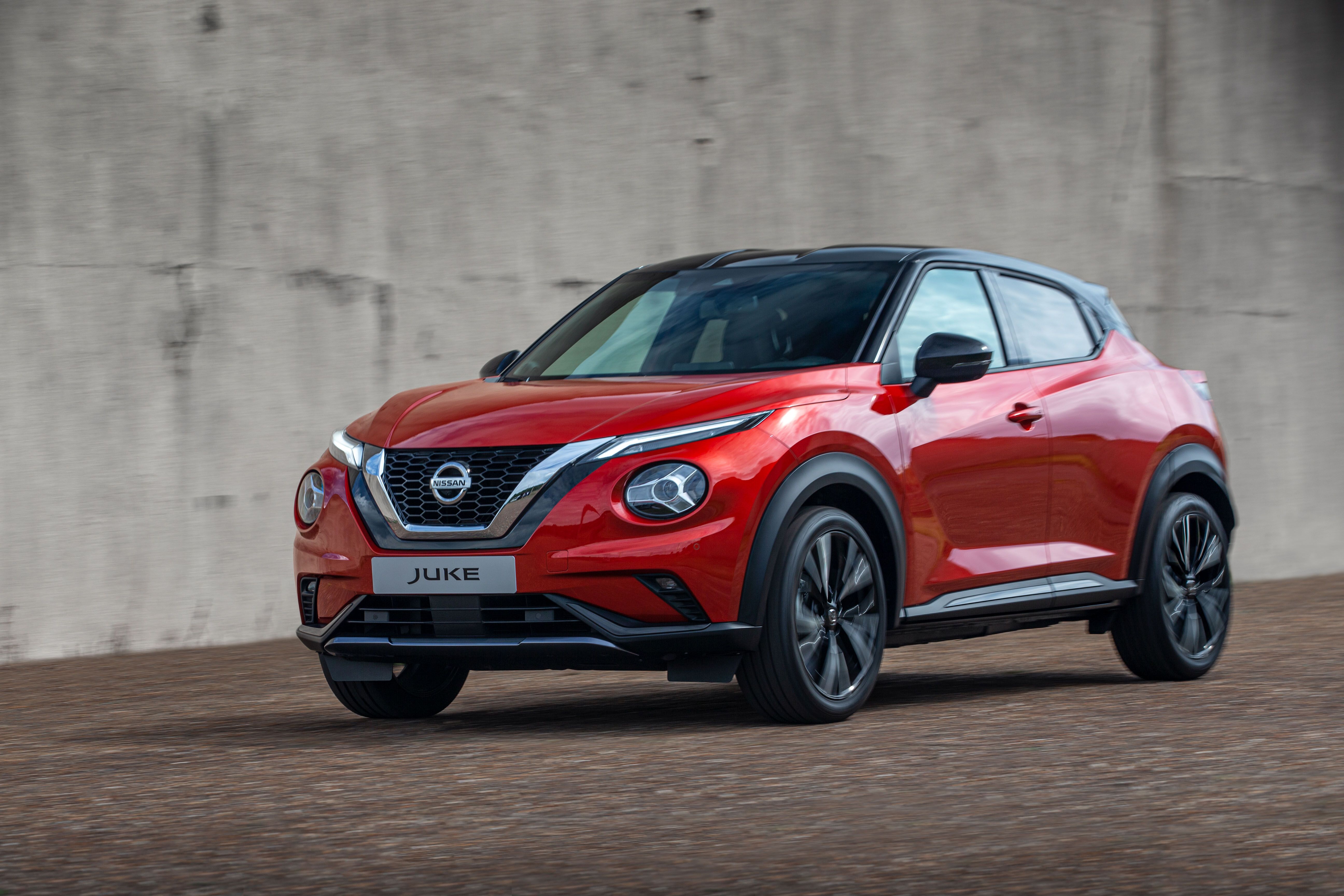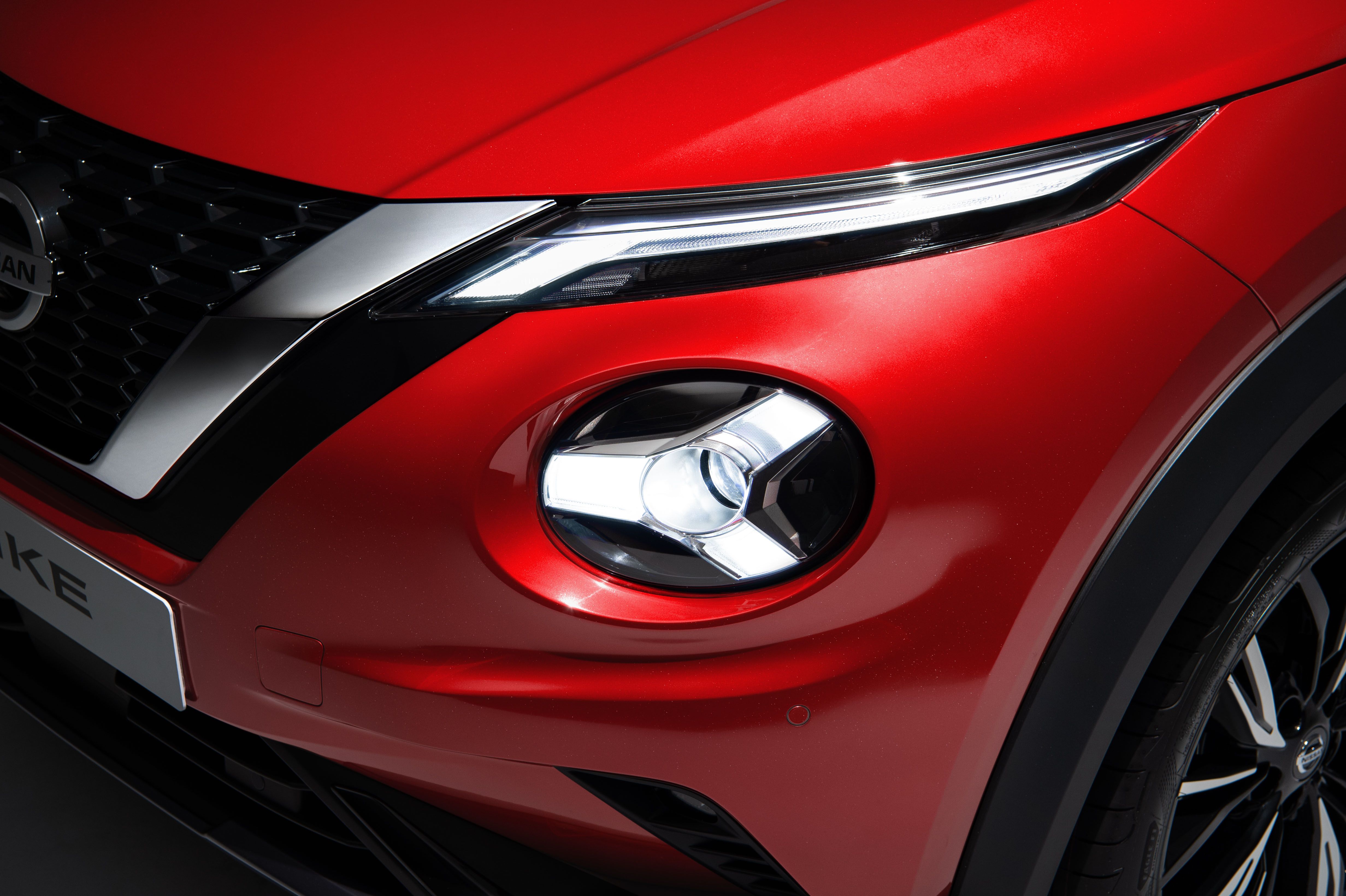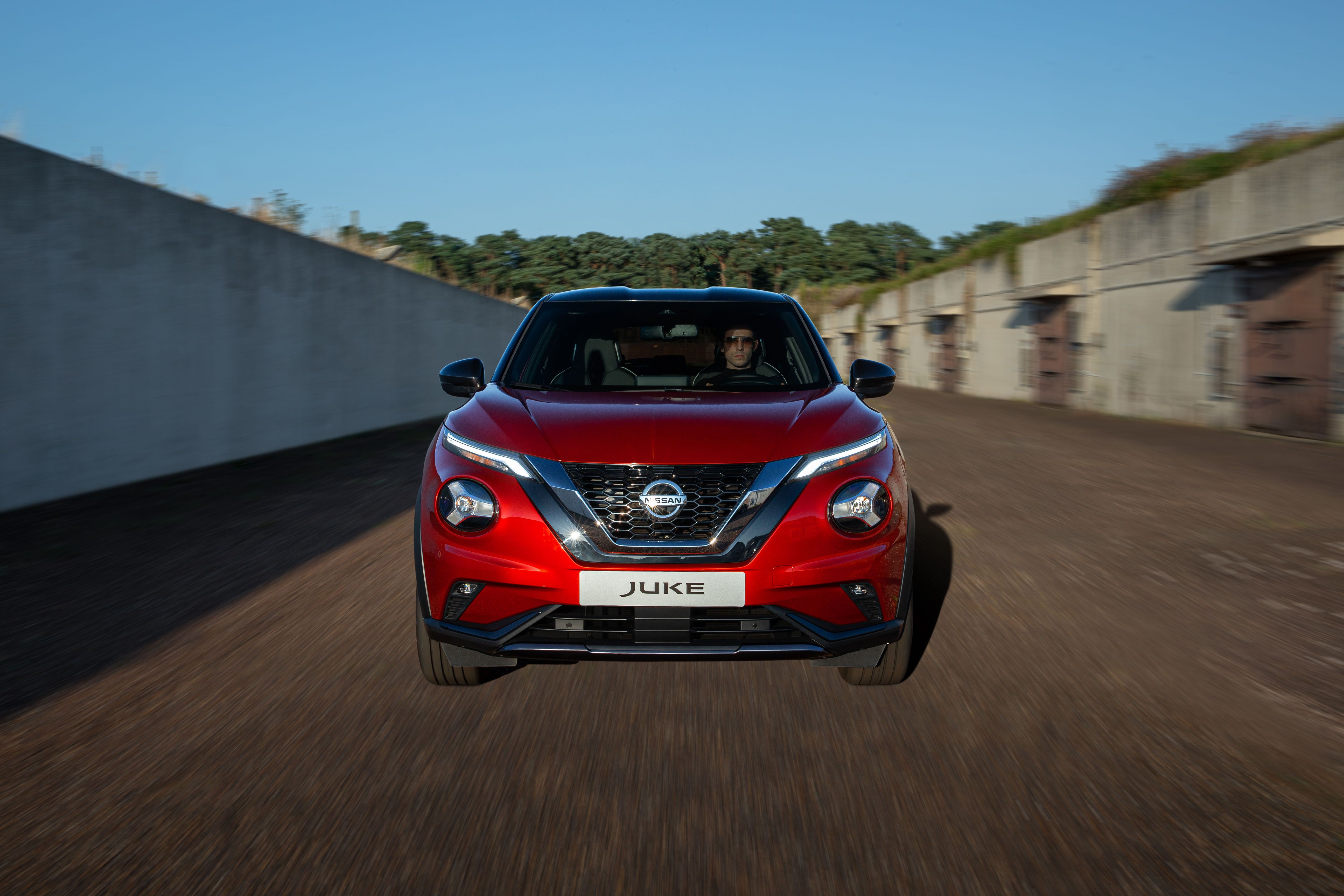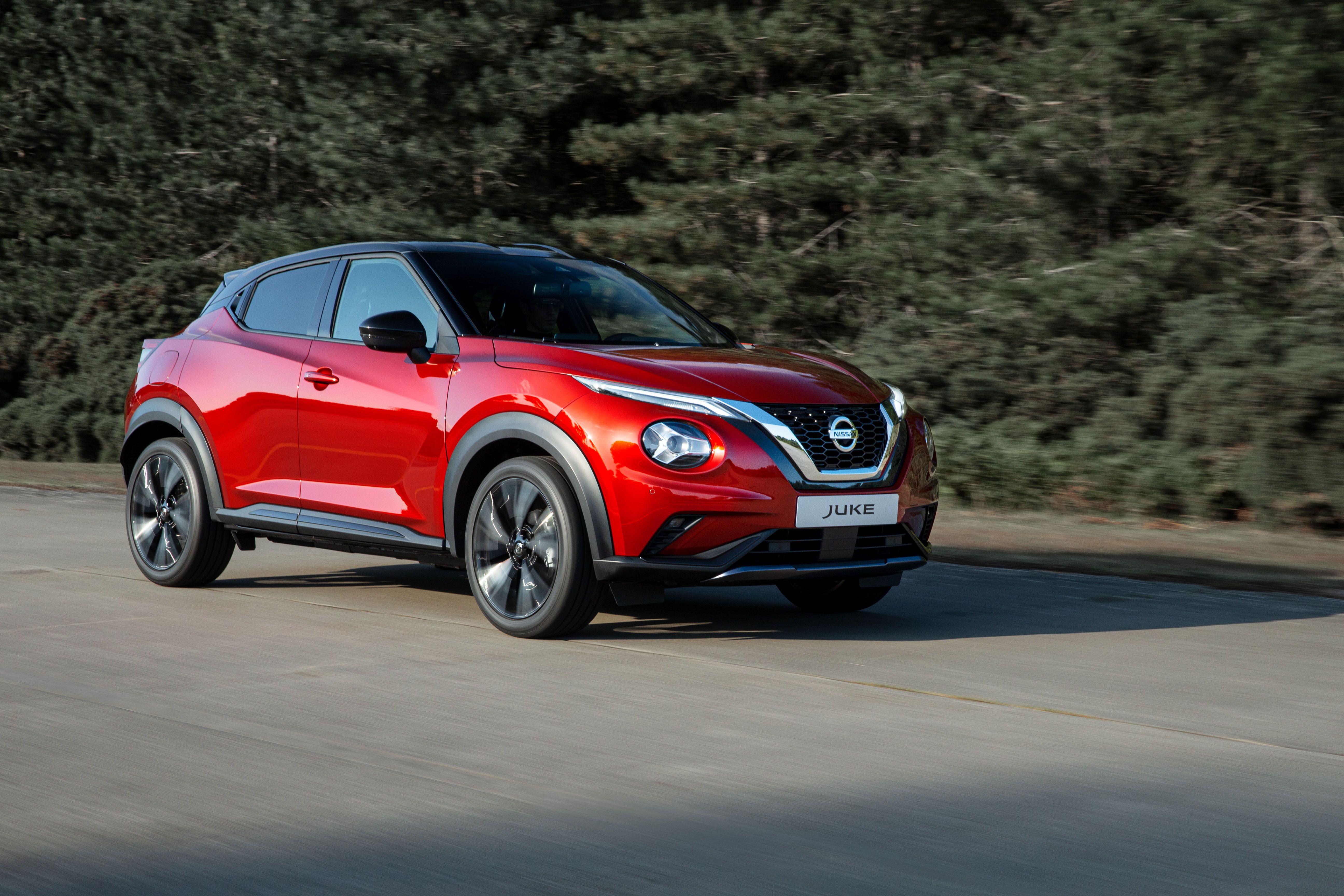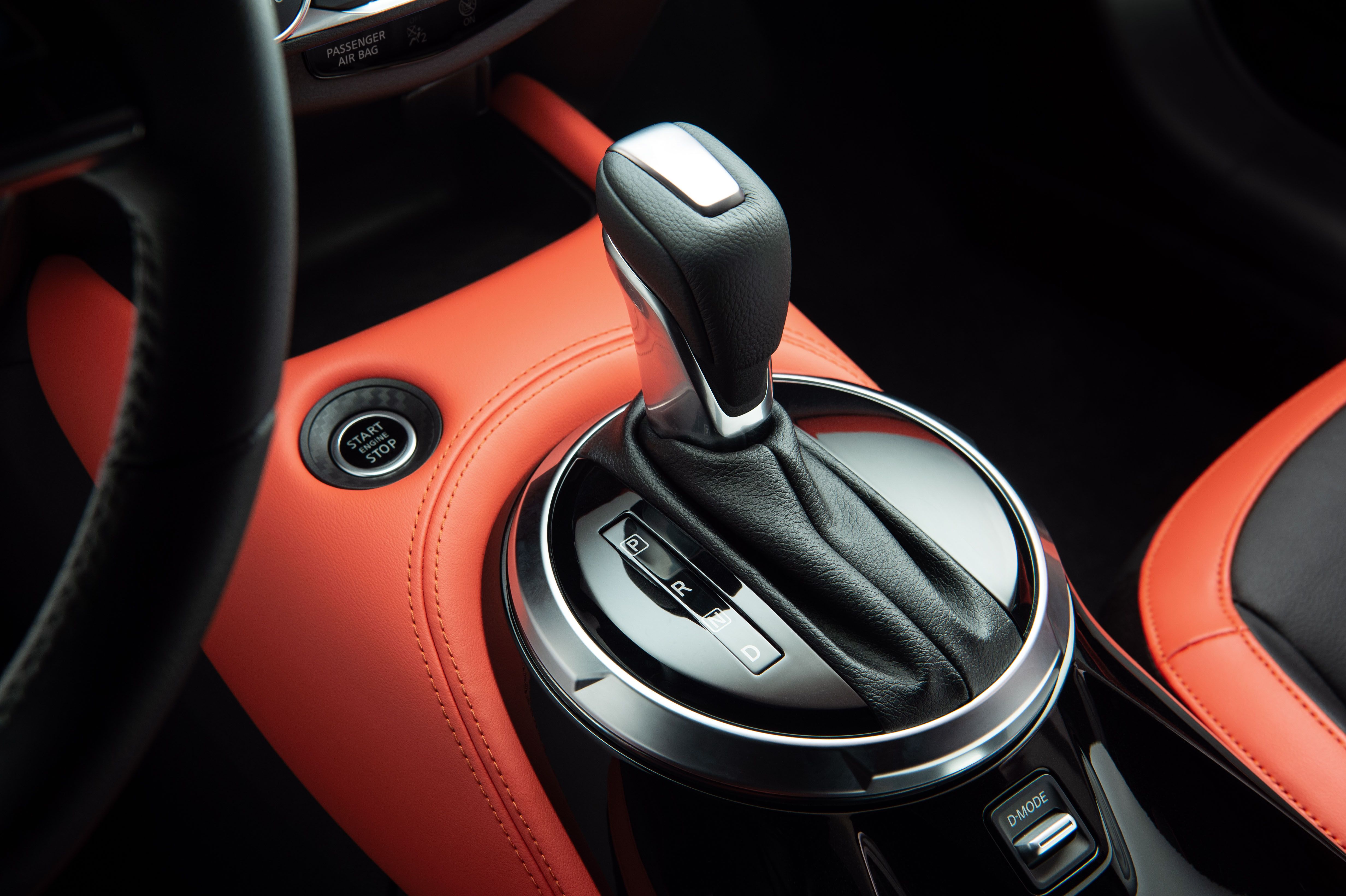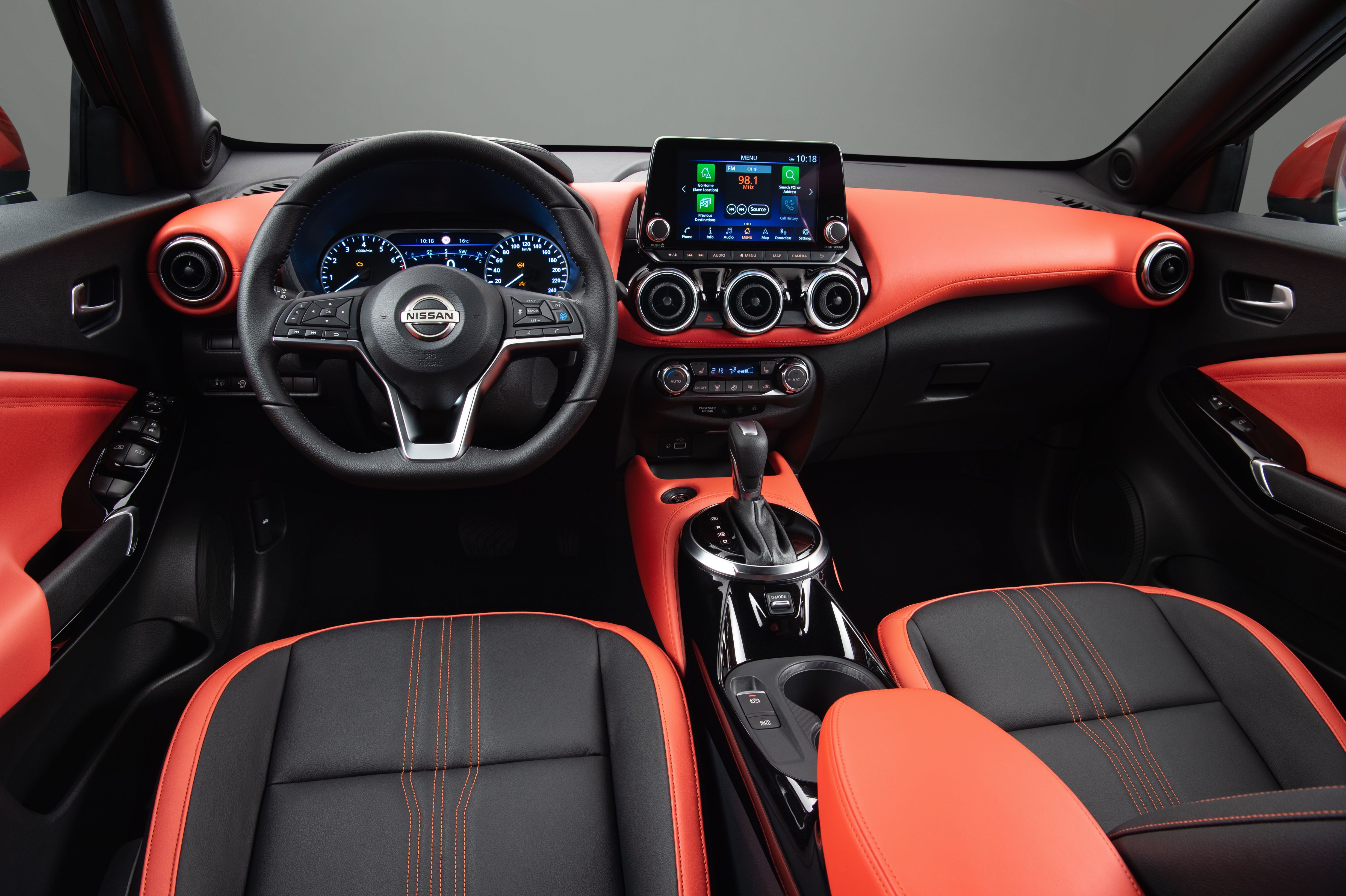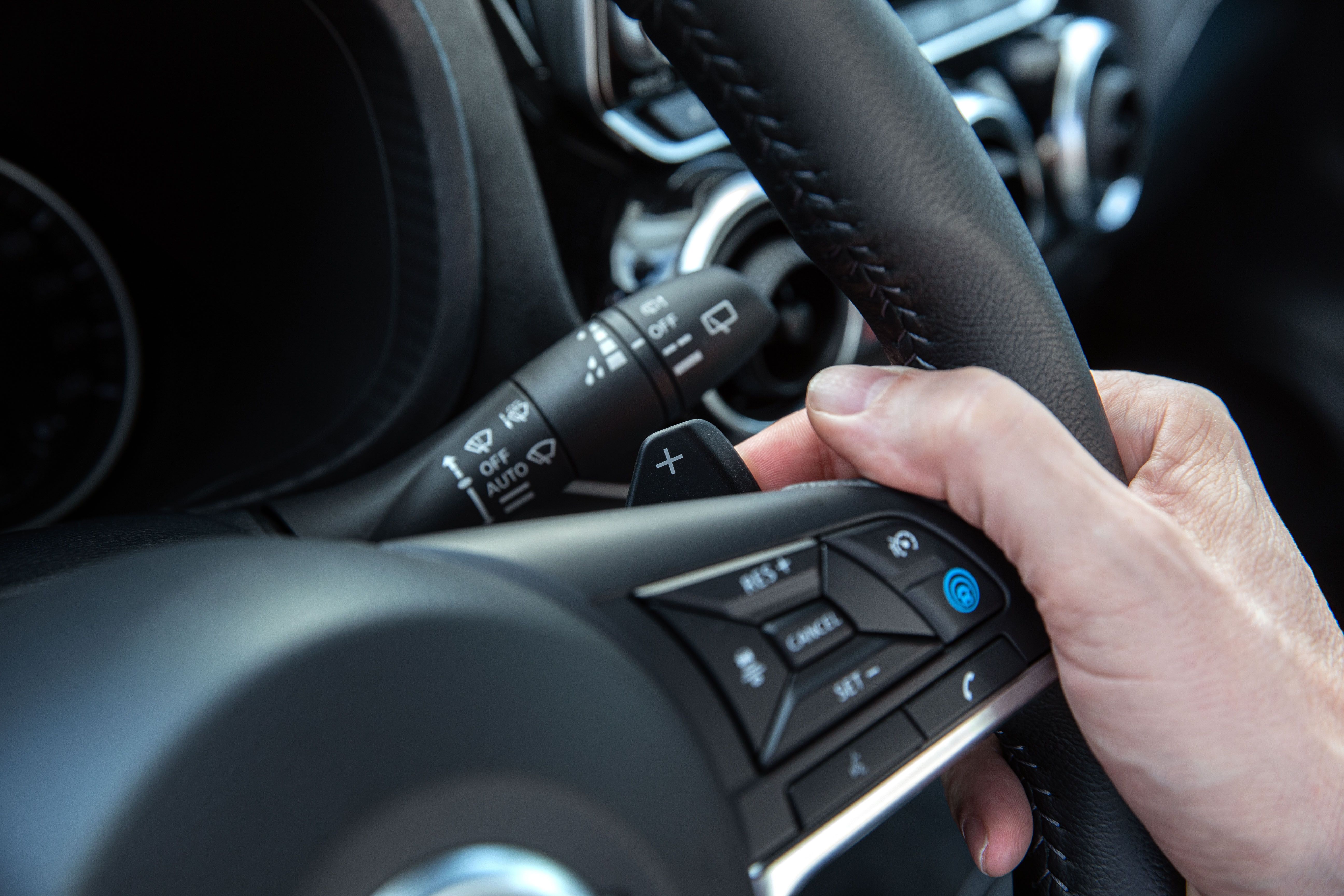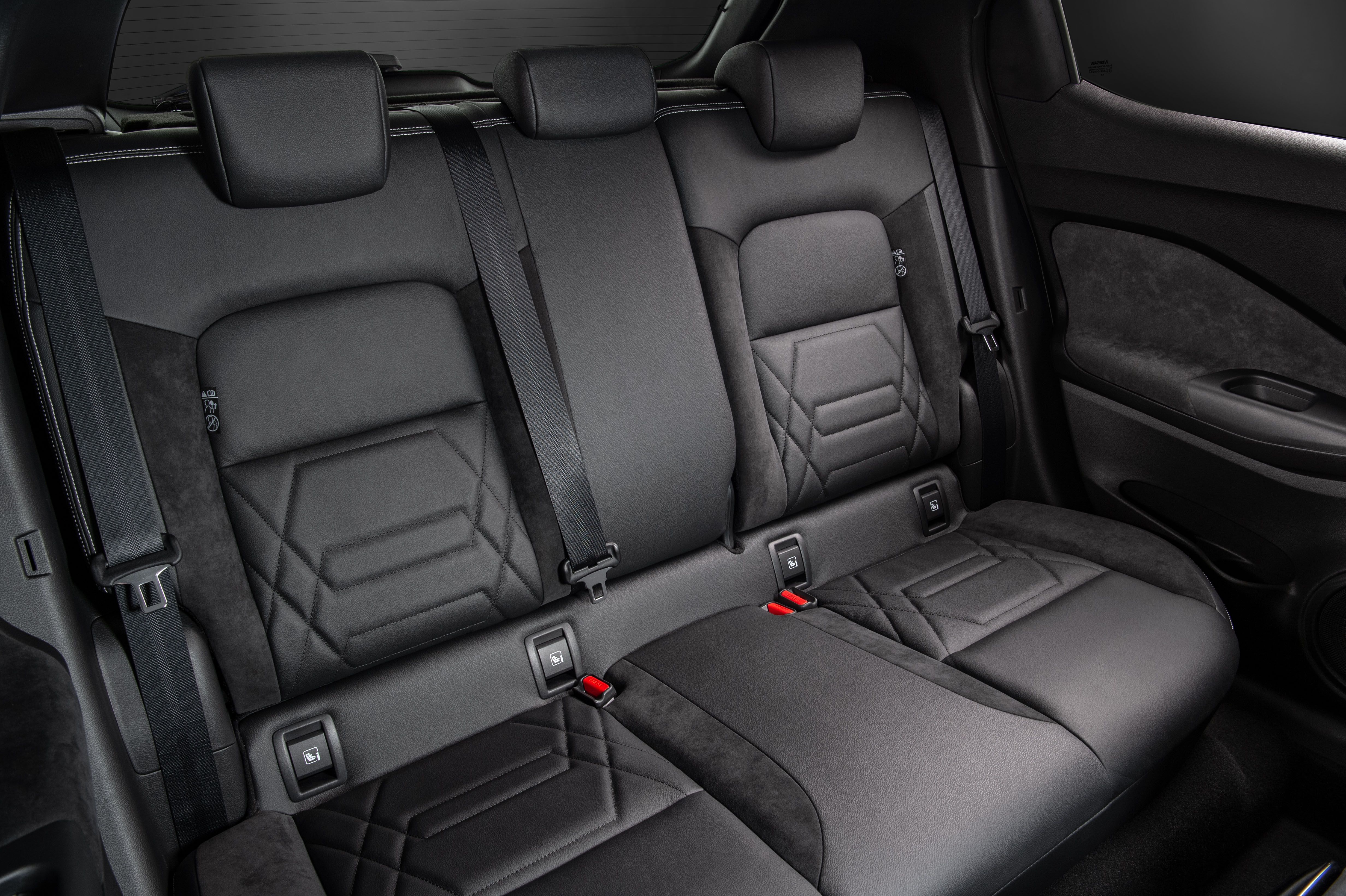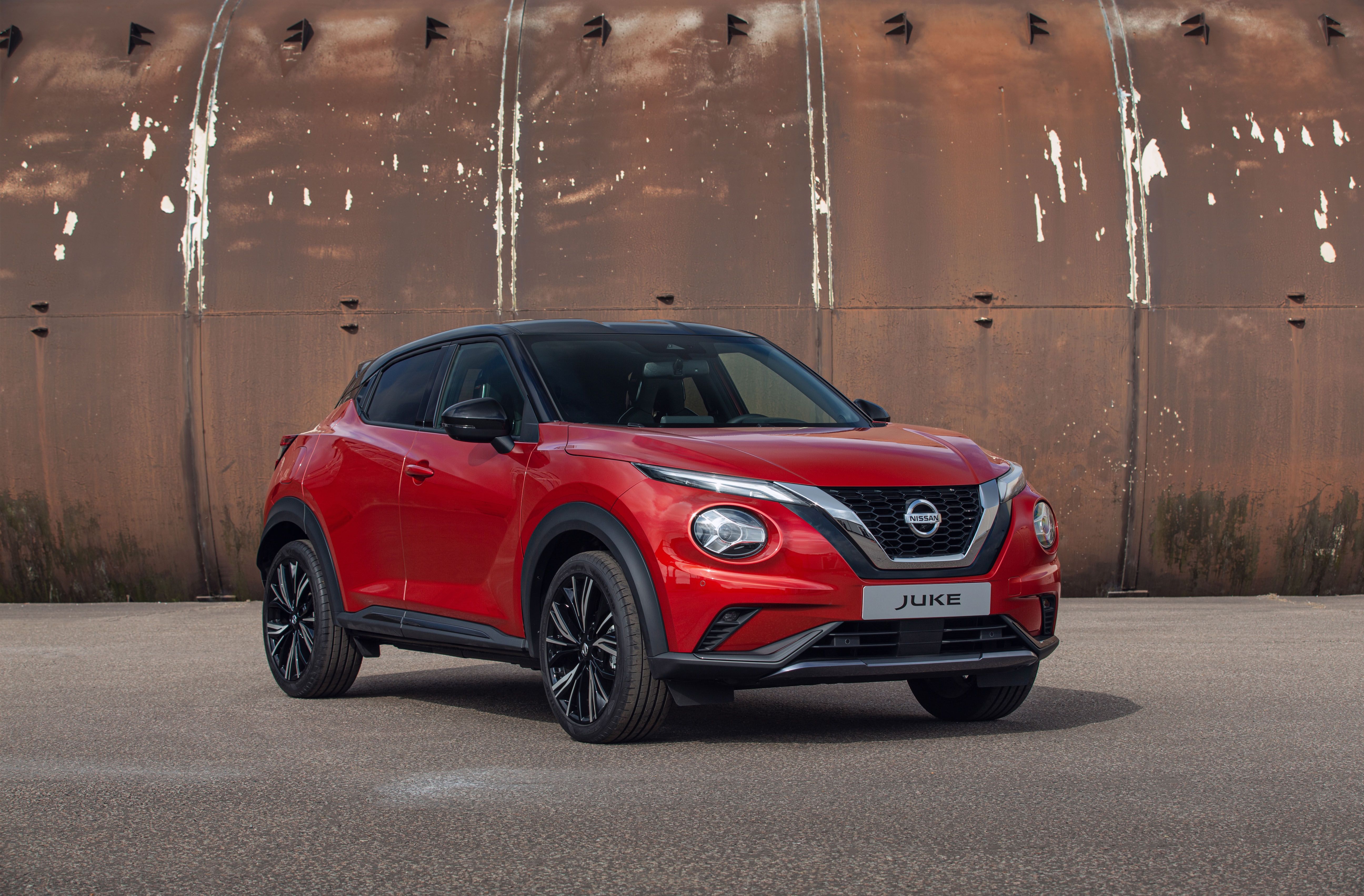Nissan took a gamble when it launched the Juke small crossover in 2010. The bug-eyed design was definitely very polarizing, but the model quickly (and rather surprisingly for some) gained a lot of fans and now it’s a really common sight in many countries (over one million found homes just in Europe alone). And since the radical design approach proved so successful, Nissan has elected not to change it too much for the model’s second generation that was just revealed, even though it’s an all-new vehicle riding on a different platform.
2019 Nissan Juke may look the same, but it’s actually quite different
|
|
ids=859553,859554 |
no_overlay=false |
before_label=2020 Nissan Juke |
after_label=2018 Nissan Juke> |
One of the previous-gen Nissan Juke’s biggest selling points was the way it looked. Back in 2010, absolutely nothing on the road looked the way it did. It has since inspired an entire bug-eyed design craze in the automotive segment - the industry really hasn’t been the same since the Juke came along and you can now pick from one of several small crossovers that feature a fascia that was clearly inspired by it.
Striking face aside, the previous Juke also stood out thanks to its bold, rounded flanks, small greenhouse accentuated by the hidden rear door handle (a design feature still present on the new car) and the pert rear end with high-set light clusters. Most of the above has been carried over to the second-gen Juke, but by current standards it no longer feels brash, unusual and in-your-face, as the old one did back in the day.
The grille appears to have grown, but it hasn’t really. There’s just more of it in the center of the front fascia - the previous Juke’s grille extended all the way to the edges of the car. The bumper itself isn’t as daring either - if you block out the entire top part of the car, the bumper just looks like any typical Nissan bumper, whereas that of the old car had a more unique design to it.
The first-gen Juke’s bold fenders with clearly defined flanks are no more. For the front fenders, Nissan has smoothened out the design considerably - if you’d block out the front fascia in a front three-quarter view shot, you’d not know this car’s design is anything special, which was not the case with the old car - it was more individual; if you did the same, you’d still instantly have recognized it as a Juke.
|
|
ids=859555,859556 |
no_overlay=false |
before_label=2020 Nissan Juke |
after_label=2018 Nissan Juke> |
The rear end design is also different, even though it’s still just as cheeky as that of the first-gen Juke. The biggest change that strikes you are the redesigned light clusters. Gone are the boomerang-shaped lights that went up the C-pillar and in their place is a set of more simple, trapezoidal lights. These lights are nowhere near as dramatic as those of the old Juke, but at the same time they really work with the rear end design of the vehicle.
Overall, the new Juke looks like an updated, but slightly toned down version of the original. It’s still instantly recognizable as a Juke, but its designers played it safer with the overall look. And since the first-gen Juke made the impact that it did, the second one didn’t need to make a big splash, just evolve along the same basic lines.
2019 Nissan Juke rides on a new and different platform
The all-new Juke rides on Renault-Nissan’s CMF-B platform that also underpins the new Renault Clio, as well as the Captur. It has grown in size too, in all directions - it is now 4,210 millimeters long (versus 4,135 millimeters for the old model), 1,800 millimeters wide (versus 1,765 millimeters) and it stands 1,595 millimeters tall (versus 1,565 millimeters).
Under its hood, Nissan has currently thus far announced the 1.0-liter DIG-T, a turbocharged three-cylinder engine with 115 horsepower (117 PS). The only additional thing the manufacturer said about it is that it will be available with either a standard six-speed manual gearbox, or an optional seven-speed twin-clutch automatic that will come with steering wheel-mounted paddle shifters.
No all-wheel drive option is mentioned in the press blurb. It may be added in the future, but since none of the other cars built on the same platform offer it, it would be a fair assumption that the new Juke may never be available with it (since the platform doesn’t support it). Besides, the old Juke only got all-wheel drive in the hot Nismo variant, so until that version comes along, we won’t be able to definitely say AWD won’t be available.
And if you were going to point out that the Renault Captur for the Russian market has optional all-wheel drive, that car is actually called the Kaptur (with a “K”) and it rides on the same underpinnings as the rugged Dacia Duster; the B0 platform, not CMF-B, so it’s actually a completely different vehicle.
2019 Nissan Juke has a more conventional interior than before
Nissan has decided to give the second-gen Juke a more grown up interior appearance. It’s also roomier than before, thanks to the new car’s larger footprint.
The dashboard layout is very similar to that of the Micra subcompact - the only major design difference has to do with the placement and shape of the climate control vents: in the Micra, they are trapezoidal and located above the infotainment, whereas in the new Juke, there are three circular vents under the infotainment head unit.
The steering wheel is the same, the climate controls are the same and most of the switches and buttons too. But even so, the Juke’s interior feels sportier than the Micra’s, helped by the sportier looking (optional) seats with one-piece backrests that are completely different. They look like they will hold you better in the corners and the embossed “Juke” script is a nice, subtle touch.
The 8-inch infotainment screen is larger than the Micra’s, but it runs the same NissanConnect operating system and it comes with on-board WiFi. Apple CarPlay and Android Auto are also standard and users can even download the NissanConnect Services app that allows them to control various vehicle functions remotely. There’s also an available premium Bose sound system that even comes with speakers built into the front seat headrests.
On the safety front, Nissan offers Intelligent Emergency Braking with Pedestrian and Cyclist Recognition, Traffic Sign Recognition, Intelligent Lane Intervention, Rear Cross Traffic Alert, Blind Spot Intervention, as well as ProPilot. The latter “offers electronically assisted steering, acceleration and braking” and it can be used on the highway, as well as in stop-start traffic.
2019 Nissan Juke and its bug-eyed crossover rivals
Skoda Kamiq
It’s been nearly a decade since the Juke introduced the two-tier front fascia with separate indicator and daytime running light clusters above the main headlights (the “bug-eyed” look) but it has since been adopted by other manufactures. One manufacturer is Skoda whose new Kamiq crossover looks like a chiseled and more angular version of the new Juke from the front. Its body is more squared off overall, though, hinting at the fact that it’s going to be roomier inside and more practical.
The Skoda Kamiq also beats the Juke in terms of available engines: a 1.0-liter TSI three-cylinder turbo with either 93 horsepower (95 PS) or 113 horsepower (115 PS), a 1.5-liter with 148 horsepower and a 1.6-liter TDI diesel with 113 horsepower (115 PS). Its interior looks smarter and more upmarket, and the Kamiq is actually available with a fully-digital gauge cluster that is missing from the Nissan.
Read our full review on the 2019 Skoda Kamiq
Hyundai Kona
Another sensible manufacturer that decided to launch a bug-eyed crossover is Hyundai. The Kona is pretty much a direct rival to the Juke (even though it also rivals the Nissan Kicks) and what it brings to the table is similarly rakish styling to that of the Nissan, both inside and out. Through its design, it actually looks more like a sporty car than the Juke and is overall a more imposing looking vehicle.
The Kona can be had with several different engines, the most powerful of which is a 1.6-liter turbo four-cylinder that has 175 horsepower (177 PS) and it pushes the crossover to achieve a 0-100 km/h time of 7.7 seconds - that blows the Juke right out of the water and makes the Kona quite fast for a vehicle in its segment. Interestingly, it’s one of the few crossovers this size that you can have either as a hybrid or even an all-electric vehicle.
Read our full review on the 2019 Hyundai Kona
Citroen C3 Aircross
Citroen has a bug-eyed crossover in its lineup too - the C3 Aircross, a cutesy rounded box on wheels that brims with cool design touches. It’s bigger and roomier inside than the Nissan Juke, and its interior has a uniquely Citroen look about it, blending shapes, textures and colors like no other manufacturer could - it’s definitely the funkiest interior in this company and with the sliding back seat, it’s also the best out of the lot for people traveling in the back; nothing beats its blend of space and modularity.
Under the C3 Aircross’ hood, you can choose from gasoline and diesel engines with power outputs ranging from 81 horsepower (82 PS) to 118 horsepower (120 PS). Manual gearboxes are the most popular choice for the Aircross, but a six-speed automatic is available (it’s just not that good compared to, say, the automatic in the Skoda Kamiq).
Read our full review on the 2019 Citroen C3 Aircross
Further reading
Read our full review on the 2019 Nissan Juke.
Read our full review on the 2018 Nissan Juke.
Read our full review on the 2015 Nissan Gripz Concept

